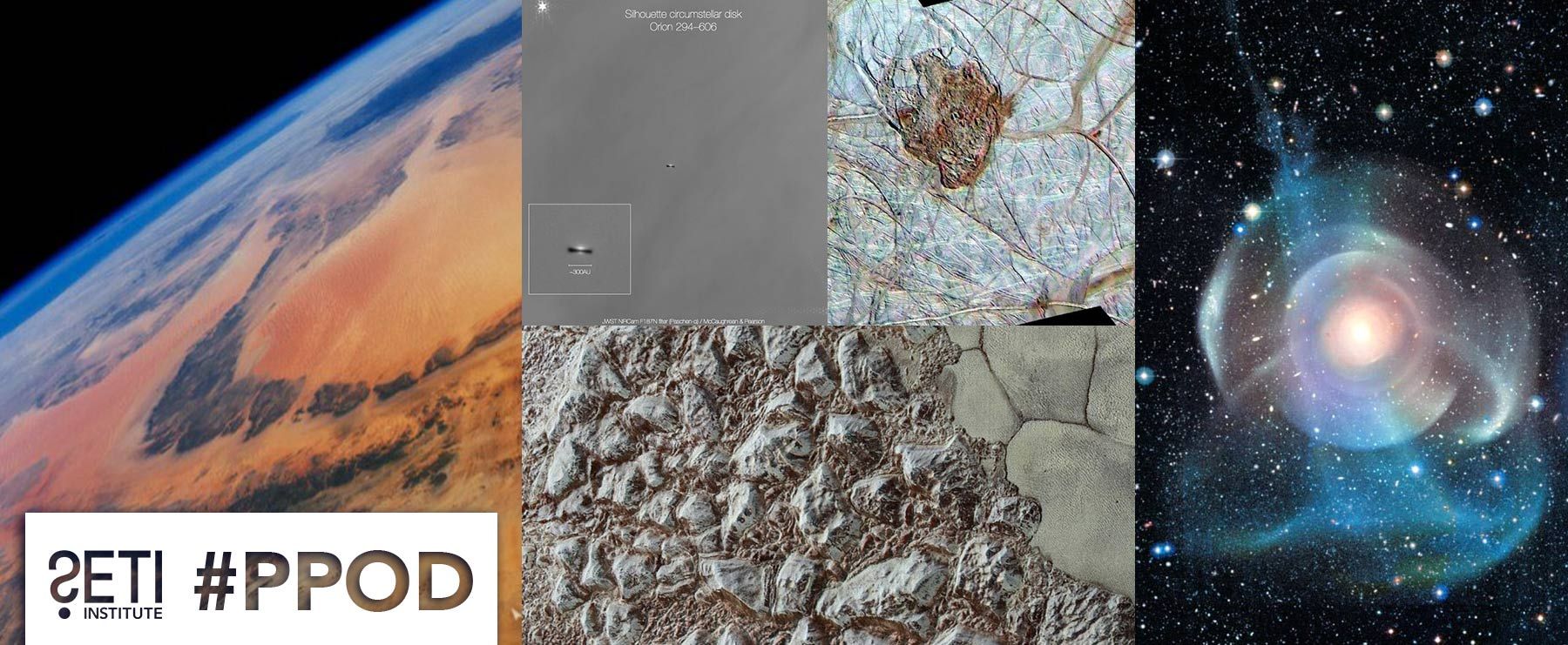
Planetary Picture of the Day
Week of October 10, 2022
Galileo, New Horizons and JWST unlock new views of the cosmos.
Monday, October 10, 2022
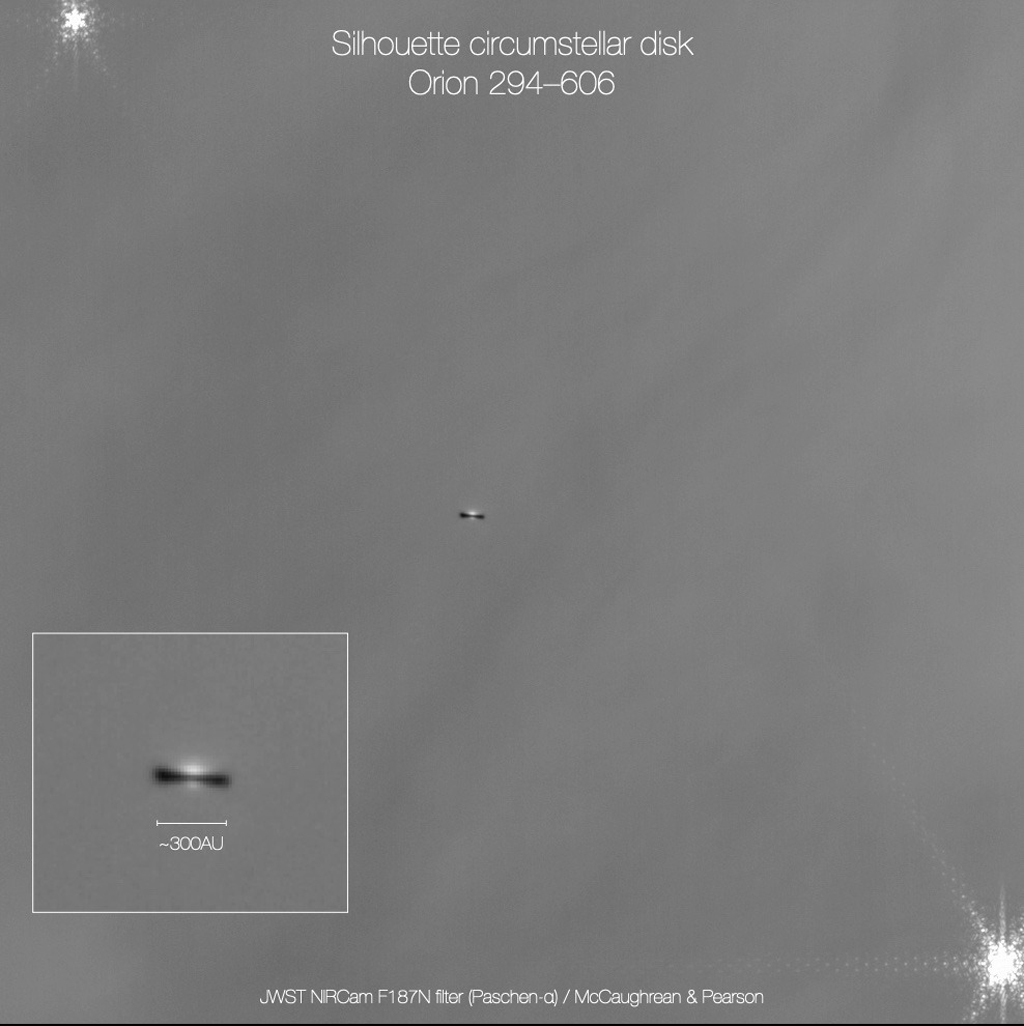
Credit: NASA, ESA, CSA, STScI, Mark McCaughrean
Birth of a Planetary System
From new JWST data, this picture shows a planetary system in the making, floating in space & silhouetted against the bright background light of the Orion Nebula. The system comprises a young star, about 1 million years old, surrounded by a dense disk of gas & dust from which planets may be being built. Seen edge-on from our perspective, the dust in the disk blocks light coming from the bright background nebula, making a silhouette.
Tuesday, October 11, 2022
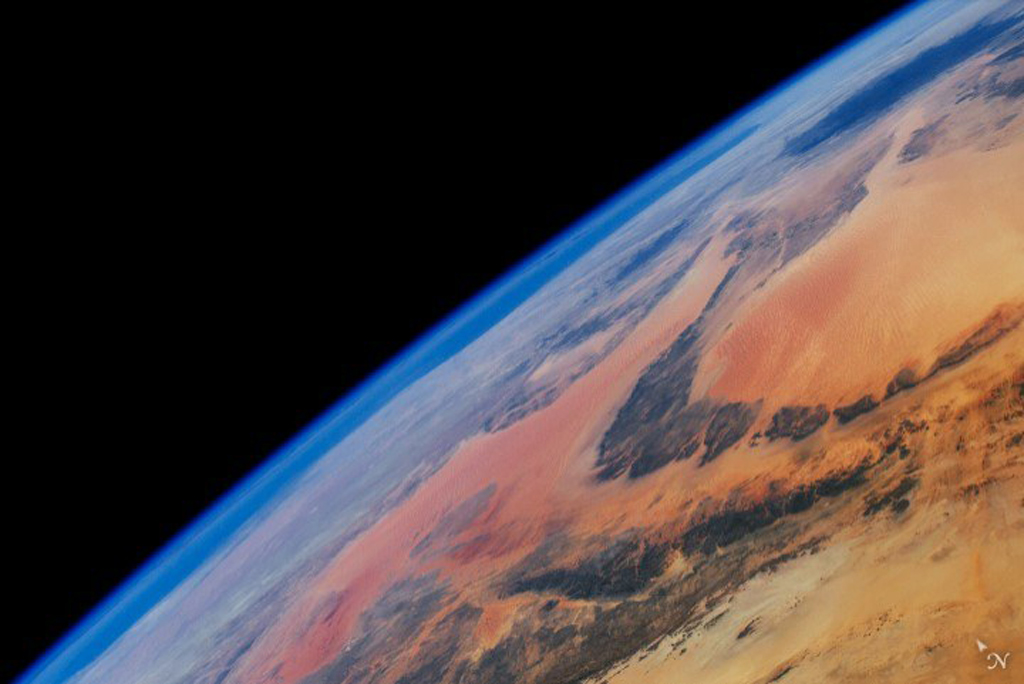
Credit: NASA Earth
Alien Earth
The vast Libyan Desert stretches toward the Mediterranean Sea, which itself fades into the horizon of this photograph. This highly oblique view of Northern Africa was taken by an External High-Definition Camera (EHDC) on the International Space Station (ISS). The burnt reds and oranges of the desert and the dark-toned mountains and plateaus contrast sharply with the bright blues of the sea and horizon; all stand out against the deep black of space. From this vantage point, Earth looks otherworldly. Were it not for the distinctive blue of the Mediterranean in the distance, it could be mistaken for Mars or the myriad desert planets of science fiction.
The Libyan Desert, part of the larger Sahara Desert, is often cited as a Mars analogue — an area of Earth that has similar features to the Red Planet. It is the most arid part of the Sahara and mostly uninhabited. The featured landscape is a mosaic of windswept dunes and darker sandstone plateaus making up the Fezzan region of Libya.
Wednesday, October 12, 2022
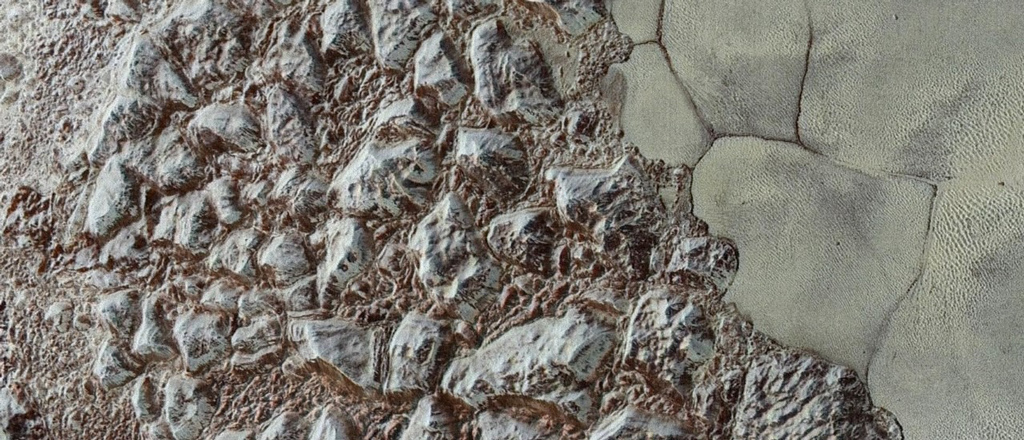
Credit: NASA/JHUAPL/SwRI
From Mountains to Plains
The image was taken by NASA's New Horizons about 15 minutes before closest approach to Pluto and shows an area about 30 kilometers across. On the left is al-Idrisi Montes, mountainous highlands thought to be composed primarily of blocks of water ice. A sharp transitional shoreline leads to the ice plains, on the right, that compose part of the heart-shaped feature known as Sputnik Planum, which contains ices including solid nitrogen.
Thursday, October 13, 2022
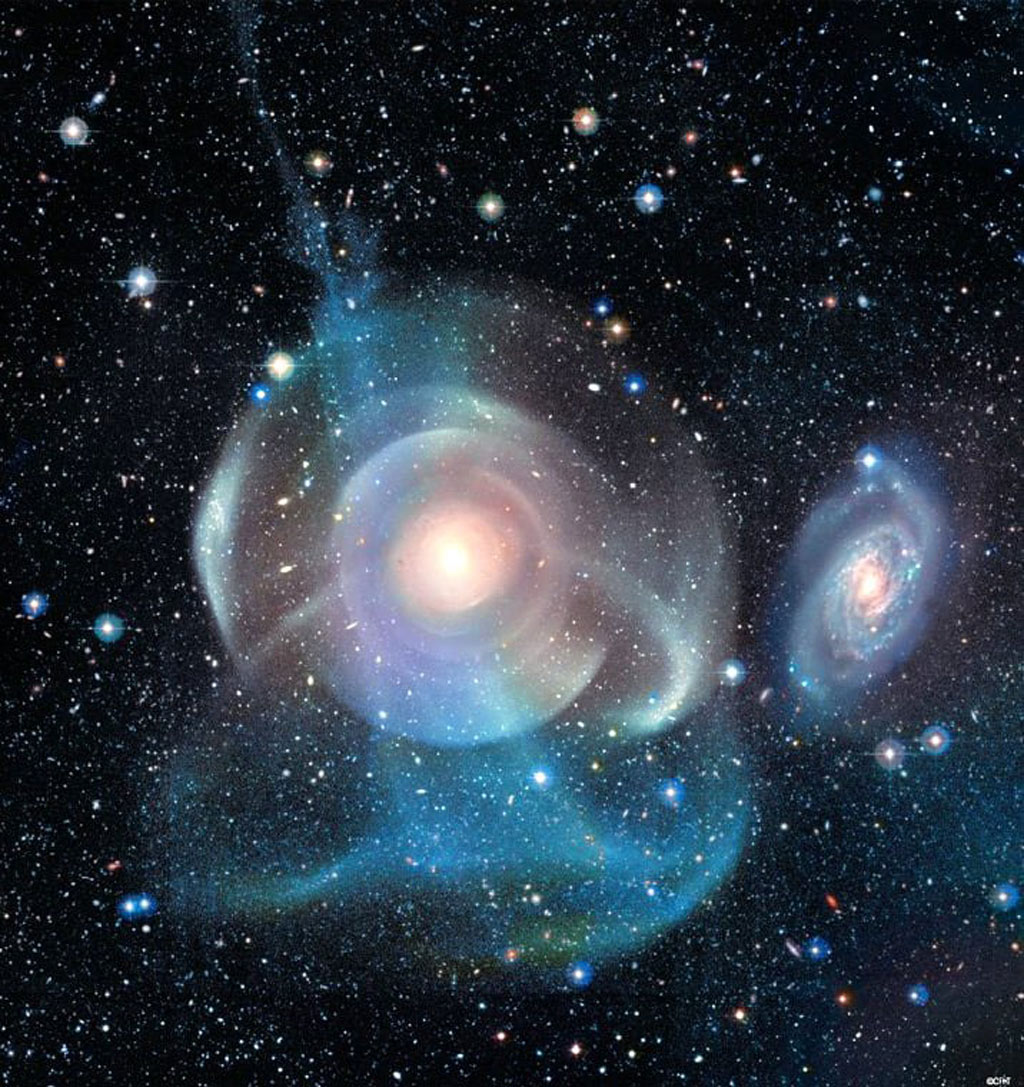
CFHT, Coelum, MegaCam, J.-C. Cuillandre (CFHT) & G. A. Anselmi (Coelum)
Shells and Star Streams
Although on large scales, galaxies are moving away from each other as the universe expands, they often interact and merge, influenced by gravity. Sometimes called the Cosmic Blender, NGC 474 in Pisces is undergoing dramatic interaction that has caused a shell and tidal tails. Its partner NGC 470 lies to its right, both about 100 million light-years away.
Friday, October 14, 2022
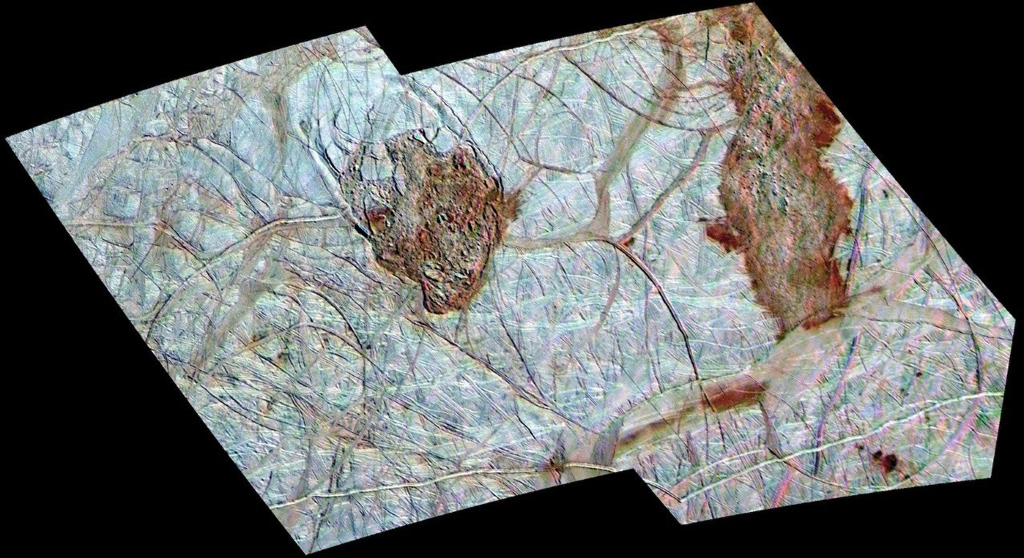
Credit: NASA/JPL/University of Arizona
Thera and Thrace
Thera and Thrace are two dark, reddish regions of enigmatic terrain that disrupt the older icy ridged plains on Jupiter's moon Europa. North is toward the top of the mosaic obtained by NASA's Galileo spacecraft. The sun illuminates the region from the northeast.
Thera (left) is about 70 kilometers wide by 85 kilometers high (43 by 53 miles) and appears to lie slightly below the level of the surrounding plains. Some bright icy plates which are observed inside appear to be dislodged from the edges of the chaos region. The curved fractures along its boundaries suggest that collapse may have been involved in Thera's formation. In contrast, Thrace (right) is longer, shows a hummocky texture, and appears to stand at or slightly above the older surrounding bright plains.





